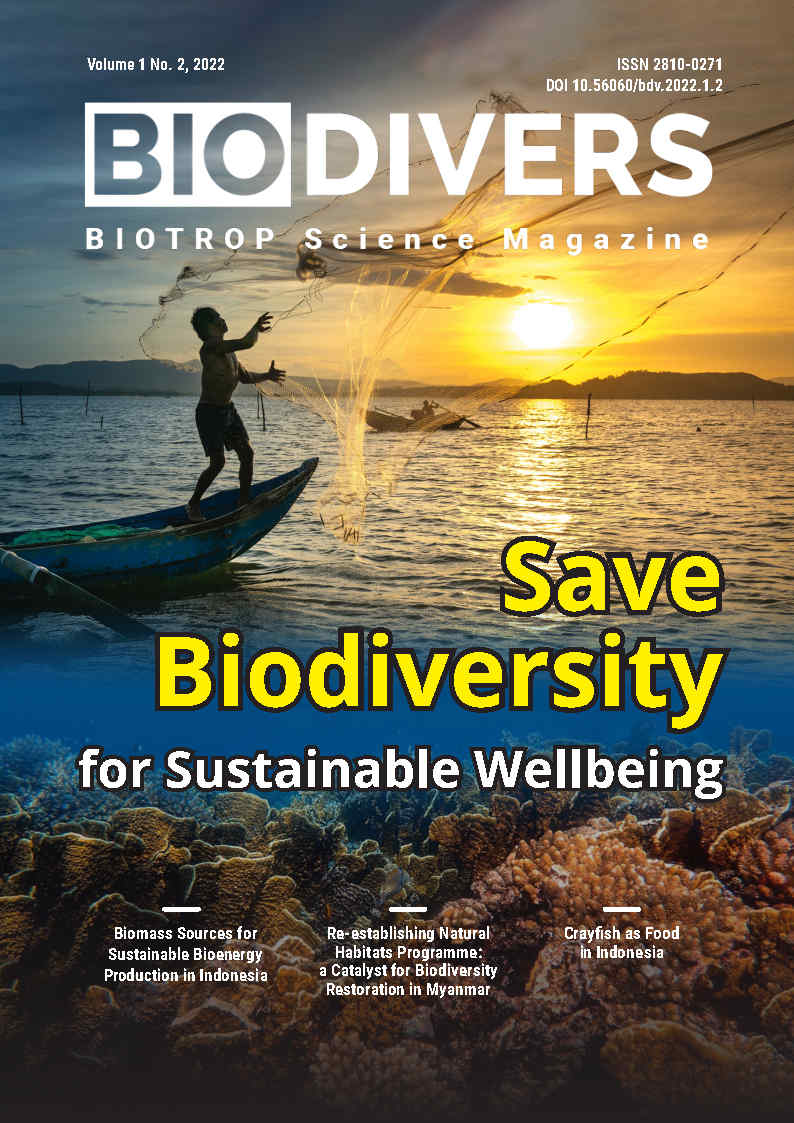
BIODIVERS Volume 1 No. 2: Save Biodiversity for Sustainable Wellbeing
SEAMEO BIOTROP, 2022Downloaded 43 times, Read 3961 times
Description
Our biodiversity in our beloved one Earth is facing serious challenges as world population is increasing. It is projected that world population will reach 9.8 billion in 2050 and 11.2 billion in 2100. This growing population will put pressure to the sustainable use of natural resources in meeting the demand for human basic necessities, i.e., food, water, and energy, which encourage urgent actions for preserving the sustainable environments. Countries around the globe already paid attention to sustainably manage the environment, since the adoption of the Stockholm Conference, Sweden, 5-6 June 1972.
About 20 years later, the attention to sustaining biodiversity is strengthen by issuing the Convention on Biological Diversity (CBD) directed for protecting biodiversity and restoring degraded ecosystems in 1992. We should put efforts in ensuring environmental sustainability understanding the vital role of the environmental functions and resources in providing human needs. The environments support human lives by supplying water, food, energy, and comfortable climates. Efforts to sustain the environments require further understanding on the connection between human dimensions and environmental degradation. Balance condition is required between ecological system protection and economic development to ensure environmental sustainability. The target of sustaining the environments is the key strategy against the backdrop of the growth of human population and the rampant exploitation of the environment. The underlying concern is that the future generations are on the verge of confronting scarce natural resources and polluted environment.
This volume of BIODIVERS raises the importance of the theme “Save Biodiversity for Sustainable Well-being”. The science magazine concentrates on calling for articles that elaborates focused aspects of Save Biodiversity, namely: 1) Restoration and conservation of unique and degraded ecosystems, 2) Sustainable management of biodiversity, 3) Utilization of bioenergy and biotechnology to support sustainability, 4) Strengthened ecosystem resilience, 5) Ecotourism development in promoting biodiversity conservation, and 6) Initiatives against potential risk of biodiversity loss. Responding to this call, contributed articles discuss subjects on bioenergy, contamination, conservation, biotechnology and breeding, and food nutrition. The contributed articles are mostly from case studies in tropical countries, which is blessed to have a mega-biodiversity of flora and fauna. Appreciating the efforts, this remarks briefly discusses the tropical biodiversity